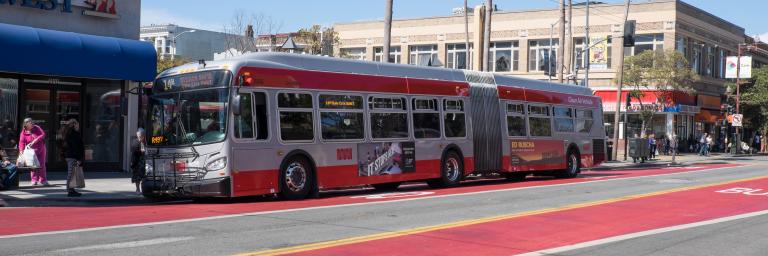The new Rapid Network prioritizes frequency and reliability on our most heavily used routes. Our Rapid lines carry nearly 70% of customers, and form the backbone of the Muni network.
The Rapid Network is a key part of the Muni Forward project. Many of the projects on our Rapid network are Transit Priority Projects. For a full list of all Muni Forward projects, visit the Muni Forward Implementation Plan.
- Actual (Current)
The Rapid Network
Our Rapid Network uses transit priority lanes with efficient stop spacing to move buses more efficiently along their routes. We’re creating better boarding zones to make it safer and faster for passengers to get on board, and making it easier to find our bus stops and shelters with improved signage. On Rapid Network routes, buses and trains will also be given “transit signal priority” in order to reduce delays. Many of these improvements are already underway, with hundreds more planned all across the city.
Muni Rapid
As part of the Rapid Network, the term "Rapid" (R) replaced "Limited" (L) for Muni’s Limited-stop routes. Rapid routes encompass all the benefits of Limited lines, but are receiving increases in frequency and reliability as the routes receive additional investment in transit priority improvements.
The Rapid Network includes:
- 5R Fulton Rapid
- 9R San Bruno Rapid
- 14R Mission Rapid
- 28R 19th Avenue Rapid
- 38R Geary Rapid
- J Church
- L Taraval
- N Judah
- K Ingleside
- T Third Street
- M Ocean View
Working in tandem with our Rapid Network, Muni will still offer end-to-end coverage of the city that puts a Muni stop within a quarter mile of every San Francisco resident.
